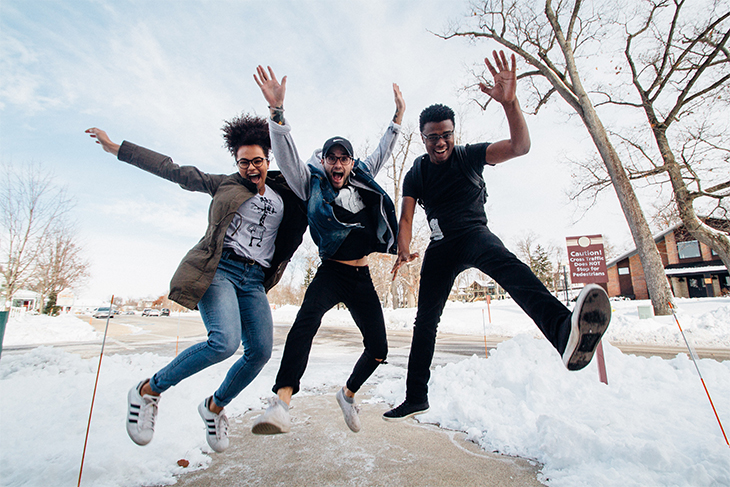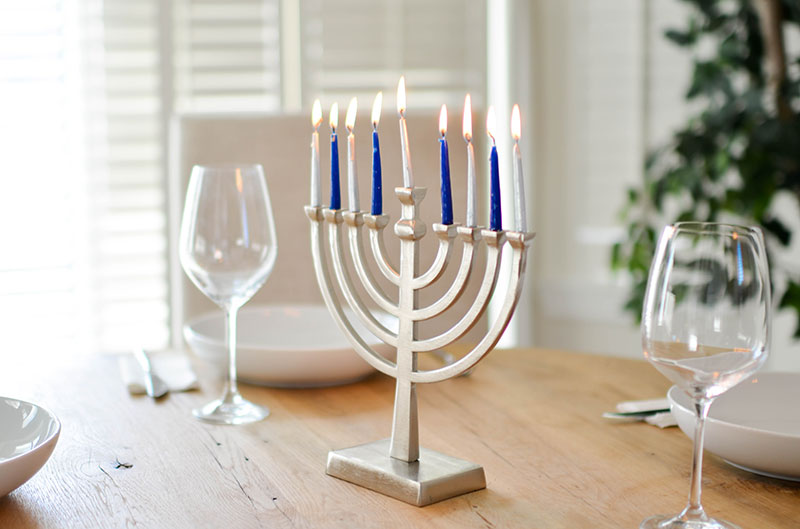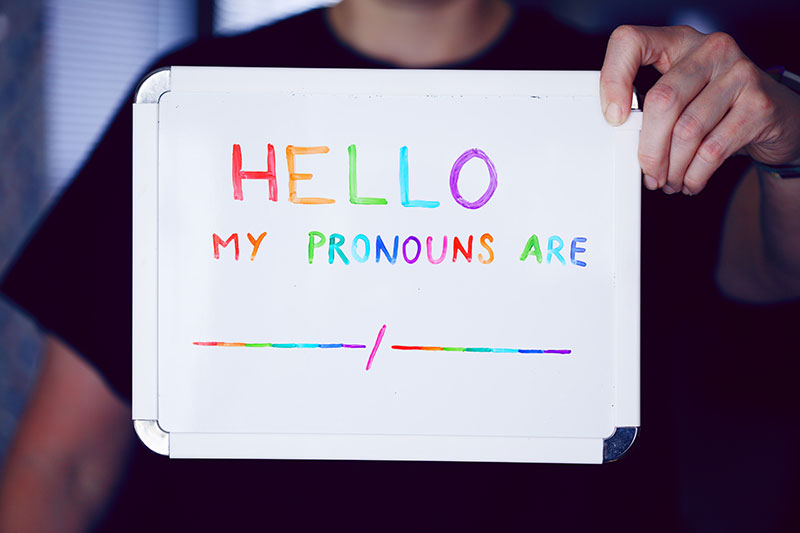3 seasonal steps to supporting inclusion

Now more than ever, it’s important to recognize and celebrate the diversity in our communities. With a little mindfulness, we have the opportunity to experience and learn something new.
Ensuring our campus is a more inclusive place to work and study is a shared responsibility, and it’s not as hard as you might think. Small and large gestures of inclusion build up to create the critical mass needed to shift culture.
Try these tips to support inclusion this holiday season from SAIT’s Associate Director, Community and Belonging John Partington.
1. Bring variety to virtual holiday gatherings.

It’s important to remember there are many faith-based and cultural celebrations this time of year. Enrich seasonal virtual gatherings with friends and colleagues by getting to know other traditions — try a virtual show-and-tell where participants can share cultural holiday symbols, decorations and cuisines.
Did you know?
- Diwali, celebrated between mid-October and mid-November, marks the start of the Hindu New Year.
- In December, Jewish families may celebrate Hanukkah with foods fried in oil — such as latkes (potato pancakes) — to commemorate the miracle of long-burning oil.
- Throughout Kwanzaa — a week-long festival beginning Dec. 26 — seven candles are lit, each symbolizing a key value in African culture.
The SAIT Interfaith Centre has chaplains from a variety of faiths to support students and employees. Learn more about the centre's services and read up on different faiths and traditions by subscribing to their monthly newsletter at student.engagement@sait.ca.
2. Use inclusive language.

Whether sending written holiday greetings or getting together over Zoom, words matter.
Use the word “partner” to refer to someone else’s significant other. This is always best-practice because you can’t assume how someone identifies. And consider opening virtual holiday get-togethers with round-table introductions and the opportunity to share personal gender pronouns. This will help to ensure everyone feels respected, validated and included.
“Consider adding your pronouns to your display name in a Zoom meeting,” says Partington. “Mine appears as ‘John Partington (He/Him/His).’”
3. Attend virtual events to widen your perspective.
This year, many events you would typically attend in person have moved online. Take advantage of this virtual smorgasbord — fill your calendar with a mix of safe, in-person events and those you can attend from the comfort of your living room.
Here are just a few to check out this winter:
- Christmas Carol: A Drag Story
16 to 23 | Online
This fun and snappy 45-minute virtual re-telling of Dickens’ tale features eight talented performers and multiple drag numbers. - Idols and Goods
Until Sunday, Jan. 31, 2021 | Online
This exhibition and curatorial essay presented by Chundas Locas Mexas is a semi-historical reflection on the Day of the Dead and immigration. - Threads of Living Memory
Until Jan. 10, 2021 | Online and in person
Drawing on Glenbow’s Inuit textiles collection and loans from across Canada, these objects and artworks are manifestations of the dynamic connections between the makers, the viewers, the land, the spirit world, and future generations of memory makers.
‘Tis the season
No matter what or how you’re celebrating this year, make time for self-reflection.
“We can all practice gratitude and take stock of who and what is important to us after a challenging year,” says Partington.
Stories like this and resources provided are part of SAIT’s commitment to equity, diversity and inclusion.
Commitment to Excellence
We prepare students for successful careers and lives.
SAIT'S
2020-2025
Strategic plan

Oki, Âba wathtech, Danit'ada, Tawnshi, Hello.
SAIT is located on the traditional territories of the Niitsitapi (Blackfoot) and the people of Treaty 7 which includes the Siksika, the Piikani, the Kainai, the Tsuut’ina and the Îyârhe Nakoda of Bearspaw, Chiniki and Goodstoney.
We are situated in an area the Blackfoot tribes traditionally called Moh’kinsstis, where the Bow River meets the Elbow River. We now call it the city of Calgary, which is also home to the Métis Nation of Alberta.